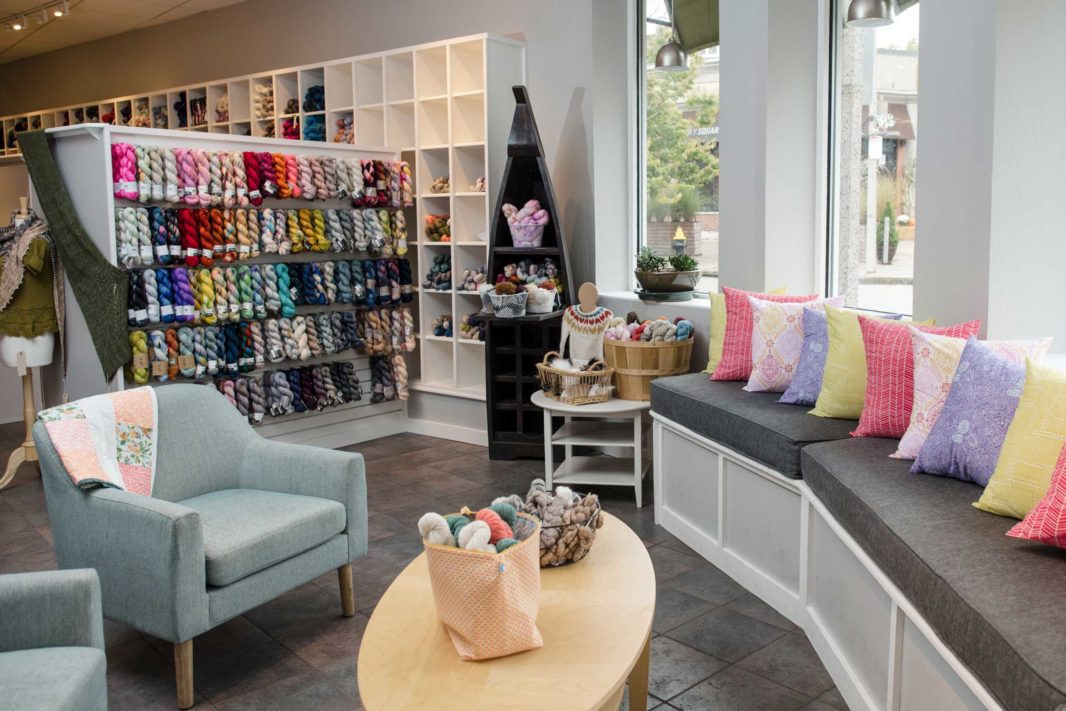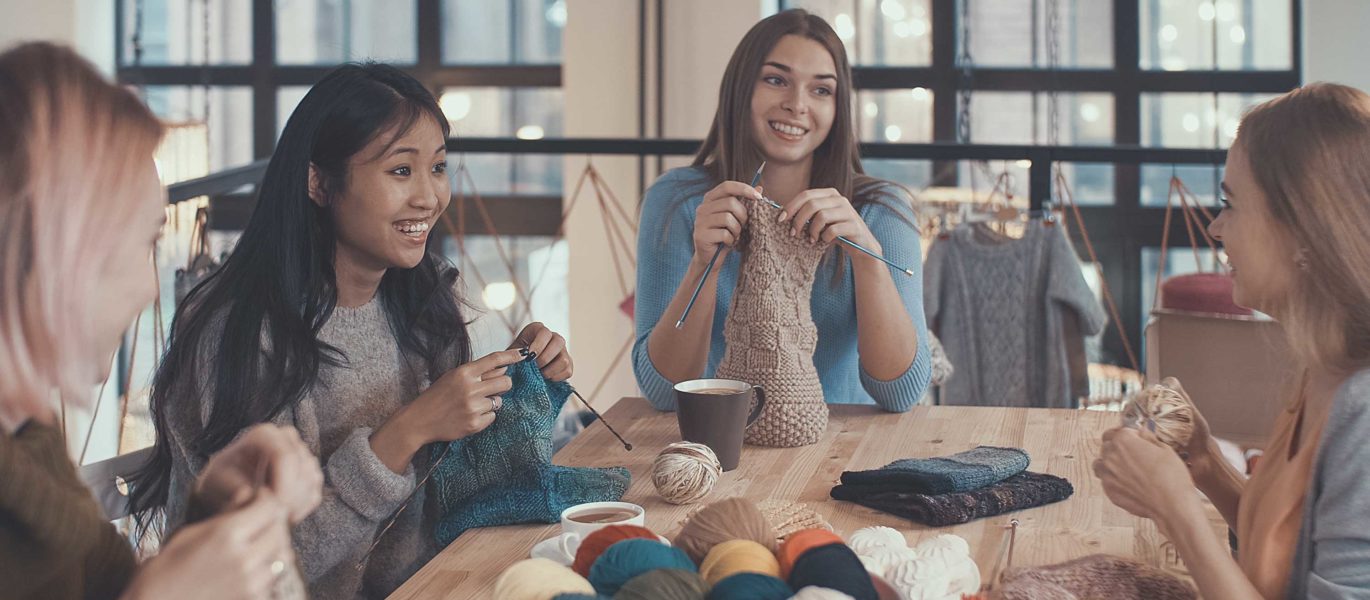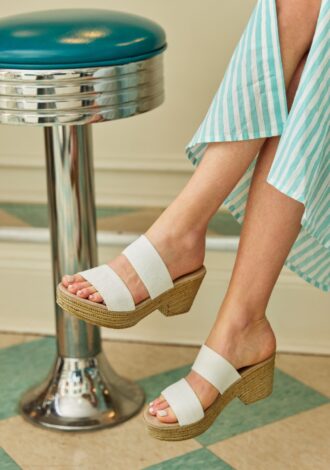For centuries, women have been using crafting circles and quilt bees not just as opportunities to embroider, crochet and quilt, but as safe spaces to speak their minds and as vehicles to affect social change.
Today, handcrafts are still very popular in art spaces (this Boston artist is doing it), fashion boutiques (have you been to Kristen Lambert’s Third Piece in the South End?) and friend groups. According to a Quilts, Inc. survey, there are currently 24 million quilters in the U.S., and it’s supported by a $9 billion industry.
Psychologist Dr. Helen S. Hwang, who has her own practice in the Financial District, says gatherings of people, particularly women, can have a therapeutic impact. She compares the experience to group therapy, a similar meeting of people with a common goal.
“Because of this day and age, with the access to social media, we can build this kind of connection and be part of a community online,” says Hwang. “But, there’s something to be said about meeting and feeling connected in real time with individuals that you have something in common with. By virtue of it being a group, it can be healing.”
Pamela Weeks, the Binney Family Curator at the New England Quilt Museum, began quilting during the craft revival around the country’s bicentennial. She had many crafters and quilters in her family, including an aunt who belonged to a quilting bee, made up of friends and neighbors, for over 40 years. Her aunt’s group was one of emotional support and friendship, but these creative gatherings have also bolstered activism and community outreach.
“Generally, guilds serve an educational function and a social function,” says Weeks. “[They also offer] a chance to pool your resources, hire speakers on a formal level, and have quilt shows where you can show your work. Many of them are very charitable.”
Weeks explains that many guilds will make cash donations to organizations, like the New England Quilt Museum, using the proceeds they earn from admission to quilting shows.
The Amoskeag Quilt Guild she belongs to also makes pillows for hospital patients.
This function of using handcrafts to give back to the community dates back hundreds of years. During the Civil War, women working in community groups produced over 250,000 quilts and comforters for soldiers.
Weeks says she’s most frustrated by the continual representation of quilting as an older woman’s activity. Mediums like knitting and embroidery also struggle with this age-based stereotype.
But, even a superficial look at the crafting shops and studios popping up all over Boston — and elsewhere — shows that interest in crafting — and the sense of community that comes from it when women gather together — thrives.
Find A Craft, Join A Group

Courtesy JP Knit & Stitch
Gather at JP Knit & Stitch with your latest knitting or sewing project, and you’ll meet many new, like-minded friends.
Bead+Fiber
460 Harrison Ave., Boston
617-426-2323
Third Piece
631 Tremont St., Boston
857-250-4908
Stitch House
846 Dorchester Ave., Dorchester
617-265-8013
JP Knit & Stitch
461 Centre St., Jamaica Plain
617-477-3707
Gather Here
1343 Cambridge St., Cambridge
617-714-4880



 3 min read
3 min read


